When you think of “business growth,” what’s the first thing that comes to mind? Most likely…more. More employees, larger offices, and increased overhead.
But what if the conventional wisdom about business scaling—and success—doesn’t always apply, especially for creative businesses?
In our recent client discussions, we’ve been exploring an important question: What does success look like for creative enterprises, no matter what stage you’re in? The conversation has revealed something interesting: there are so many ways to define business success—and it’s not always what traditional models of growth suggest.
In this month’s newsletter, we’re challenging common growth myths that can lead creative businesses to go down a path that isn’t always the best one for them, explore how to define success on your own terms, and share a few thoughts on building a sustainable business that maximizes both profit and personal fulfillment.
Because that’s why we started our businesses in the first place, right?
The myth of “bigger is better”—and what we want to ask ourselves instead
Benchmarks for success vary dramatically across creative businesses. For an e-commerce $1 million in revenue might barely cover operational costs, while for a specialized consulting firm, that same figure could represent incredible profitability. That example means that the question isn’t so much “how big should my business be?” but rather, “how well is my business serving its purpose?”
A tick down from the “purpose” question is, “What kind of lifestyle does my business support?” Does your business allow you—and your employees—to save for retirement? Fund your children’s education? Maintain creative fulfillment? Have enough cash flow to weather slower periods of your business, whether they’re determined by market conditions or self-imposed? These metrics often matter so much more than revenue figures in determining true success.
To that end, perhaps the most revolutionary business decision isn’t necessarily “scale at any cost.” Maybe it’s choosing to optimize rather than maximize—focusing on excellence at your current size rather than growth for growth’s sake.
Building a business built to last
Some of the most resilient creative businesses we work with are that way because they’ve deliberately limited their growth to maintain quality, profitability, and founder satisfaction. You’re not limiting ambition—if anything, you’re being uber-intentional with how you define and pursue success.
Here are a few aspects we encourage our clients to consider as they’re looking to optimize their creative businesses:
Focus on high-value relationships
Creative businesses thrive when they work with clients who appreciate their unique approach and value. A boutique design studio might choose to work with fewer clients who have larger, more complex projects rather than taking on numerous small jobs with high administrative overhead. It’s all about building lasting client relationships that can lead to recurring work.
Develop systems that maximize efficiency
Using technology and streamlined workflows allows you to increase your workload without the proportional staffing increases. For example, a photography studio might implement a client management system that automates scheduling, invoicing, and image delivery.
Maintain lean overhead costs
As a creative business, there’s a ton of opportunity to build flexibility into your operations. A small architecture firm might operate from a shared workspace or home office rather than leasing expensive commercial space. Digital asset management and cloud-based collaboration tools can replace physical storage and traditional office setups, keeping fixed costs manageable even as your revenue grows.
Evaluate growth opportunities against your personal definition of success
Not every opportunity aligns with your long-term vision. Let’s say you’re a successful graphic design agency that has the opportunity for a major contract—but it means doubling your staff. If as a business owner you value creative control and work-life balance over that kind of expansion, it might not be the right move for you. Making these decisions intentionally, rather than defaulting to growth at all costs, leads to a more sustainable business.
Understanding your unique growth path
Considering a more strategic approach to your business size? When we talk with clients about their future growth, here are a few things we suggest as next steps in the process:
- Conduct a profitability analysis of your clients and projects to identify where your business truly thrives.
- Explore automation tools that reduce administrative burdens without adding staff.
- Consider strategic partnerships for specialized capabilities. This is another way to add value for your clients without having to hire additional employees.
- Revisit your pricing strategy regularly to ensure it reflects your value and market position.
- Balance client services with product development opportunities that can create passive income streams alongside your project or retainer work.
- Conduct regular reviews of your finances to make sure your business structure supports both the goals of your business—and the goals of you as a business owner.
Remember: The goal isn’t to avoid growth. It’s to grow intentionally in ways that align with your definition of success and the nature of your particular creative business.

